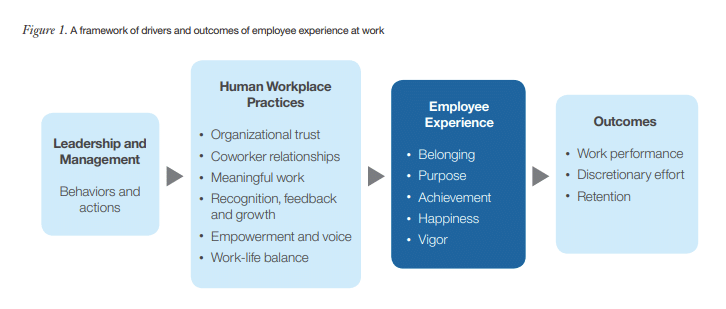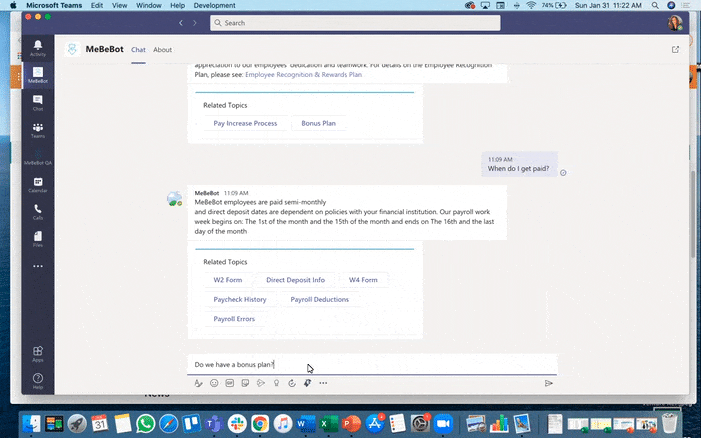At the beginning of 2021, we thought that the world would get better. Then Omicron surged in. Covid-19 hospitalizations soared to new records across the United States, leading to more delays in improving positive employee experience like office reopenings, dependence on hybrid work, and more confusion, stress, burnout, and challenging experiences for employees.
Many anticipated that Omicron would subside in February, but Covid-19 continued to mutate and pose a threat. The priorities will be how to make positive improvements across the life cycle of experiences with the company to serve customers better. In 2022, employers will maintain a laser focus across 3 employee programs: employees safety, career development, and physical and mental health (and resiliency).
History of Employee Experience
Kaveh Abhari first defined the employee experience as a set of psycho-cognitive sentiments about the experiential benefits of employment. He and his co-authors discuss how firms motivate employees to deliver exceptional brand experiences to customers. Additionally, they argue that firms are responsible for understanding and addressing employees’ experiential needs, namely cognitive, emotional, social, sensorial, and practical needs.
The IBM Smarter Workforce Institute’s analysis reveals positive employee experience is linked to better performance, extra effort at work, and lower turnover intentions.

5 Ingredients for Positive Employee Experience in 2022.
(1) Addressing stress and safety.
According to Maslow, the most basic of needs is physiological and safety. For employers in 2022, it will mean providing safe working environments from exposure to Covid-19 at work. Certainly, masks requirements, increasing employee vaccination rates, and social distancing will help. Plus, the ability to flex hybrid work models allows more employees to work from home when Covid-19 surges is a significant relief.
(2) Improving hybrid work models.
Part of this solution is to work out the kinks of hybrid work models to improve communications, providing equally rapid answers to employees at home or in the office. Also, assure equal access to training, coaching, career advancement, and pay equity while maintaining a devotion to the company’s mission and culture.
(3) Address uncertainty.
Leadership needs to address the uncertainty not just caused by covid and the advances of digitalization and what it means for impacted employees. For example, how will it change their work tasks, what skills training they will need, and how it will impact their employment. Change management surfaces new employee growth opportunities, tools, processes improvements, and efficiencies.
(4) Help employees be resilient.
Marcus Buckingham has conducted research with the ADP Research Institute on how to improve employee resiliency during stressful times. Senior Leaders need to stay one step ahead of current events as they happen. Proactively identify work employees need to act immediately, critical customer information, and contributions they can make to improve the overall business. He emphasizes that senior leaders should not sugarcoat bad news. Speak to reality, what they know. Senior leaders need to follow through on what they say they will do and build trust with employees.
Team leaders need to check in often with each employee every week to see how they are doing. Buckingham recommends asking two questions: What are you working on this week? How can I help you? Team leaders also can tell employees what they need to know for any crisis in the near team. The more they do this, the more resilient their workers will be.
(5) Digital technology can help without breaking the budget.
Act now. Look at how technology can support building positive employee experiences and resolve stress in turbulent times. MeBeBot’s Intelligent Assistant provides a cost-effective, easy-to-install solution for enhancing employee communications. Be up and running in 30 days within Slack, Teams or web portal environment. Experience returns on investment of $250K to $1 million in six to twelve months.x
Consider 6 Reasons To Invest in Intelligent Assistants
(1) Our chatbot instantly answers employee questions on HR, IT, operations, and pressing issues immediately, wherever they are at home or in the office. Or wherever they may be across the globe.
(2) It follows up on its answer by surfacing related topics (to further support your employees’ needs) and it asks if the answer was helpful or not. If not, it can refer the employee to other resources to answer the question or escalate the question to a helpdesk.
(3) The results of employee feedback show that 90 percent of employees rate the answers as helpful, and the AI is continually learning to improve the accuracy of answers.
(4) Leaders can use our “Pulse Surveys” to check in with employees on the issues they face in turbulent times and look for emerging trends by region.
(5) Employee feedback and usage results are tracked in dashboards in real-time to identify emerging trends.
(6) With Push Messaging capabilities, proactive reminders for deadlines, company announcements, updates on COVID-19 related mask and vaccine mandate changes, and business facilities can be sent out to targeted groups easily within existing collaboration tools.

MeBeBot’s Intelligent Assistant seamlessly installs as an app in Teams, Slack, or web portals to provide employees with instant automated answers to global HR, IT, and Ops FAQS. MeBeBot provides real-time usage Dashboards, Push Messaging, and custom Pulse Surveys, generating instant employee feedback on of-the-moment questions. MeBeBot’s “one-stop bot” is trusted by leading organizations to elevate the employee experience so work can be more meaningful and valuable.

